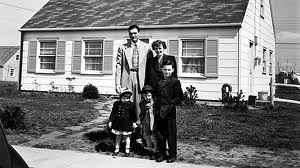By Barry Bluestone
In his State of the Union address, President Obama asked us to consider how to rebuild America’s middle class. He talked about the need to bring manufacturing back to our shores, provide greater fairness in foreign trade, educate our workforce to compete in global markets, and train a new generation of skilled workers.
All of these are indeed critical elements in providing American workers and their families with the types of jobs that made many of our parents “solidly middle class.” But history tells us that there was one other element in America’s transformation from a working class society to a middle class society, and it has to do with a statistic reported by the U.S. Bureau of Labor Statistics at the end of January.
According to the Bureau, the percentage of American workers who belonged to trade unions fell to 11.3 percent last year, the lowest level since the 1930s and perhaps as far back as 1918. Last year, of course, was when we saw unions being blasted across the country from Wisconsin to Illinois, and New Jersey.
In some cases, unions have not done themselves or their members proud by ignoring changes in the global economy or the patience that taxpayers have with the pace of public reform. But let us not forget how unions played a critical role in the very creation of the middle class.
Let’s begin with a simple definition of two social classes. We can define a “working class” household as one that has little income and even less economic security. In contrast, a “middle class” household has more income, but even more importantly, a modicum of economic security. In the 1930s, the Roosevelt Administration began the job of transforming America into a middle class society where a majority of Americans enjoyed higher wages and greater economic security. Unemployment insurance helped workers from falling out of the middle class the moment they lost a job. Social Security helped older workers from losing their middle class status once they retired.
Yet it was the passage of the National Labor Relations Act (NLRA) in 1935 that expanded the middle class the most by providing a set of rules that eased the ability of workers to join unions and work collectively to improve their lot. From just nine percent of the workforce in 1936, the proportion of America’s workers who were union members soared to more than 35 percent by the mid-1950s. What is more, given the spread of trade unionism, many non-union employers offered wages and benefits that were close to comparable with organized workplaces – in an attempt to discourage their workers from joining a union. Perhaps two-thirds of workers were thereby helped by the organizing drives of the 1930s, 1940s and 1950s even if half of them never paid a dollar in dues.
The big breakthrough in building America’s middle class came right after World War II when new union contracts were forged in the nation’s major industries. These new contracts had six provisions that would make it possible for workers of modest skill to join the ranks of the middle class along with those who had the benefit of a higher education. The first provision provided blue collar America a middle class wage:
AIF/COLA Clause – The annual improvement factor and cost of living escalator gave workers a wage increase each year consistent with productivity growth and protected their wages from the erosion of inflation.
The next five provided workers with a modicum of job and income security:
Fringe Benefits – Health insurance, life insurance, pensions
Seniority – Layoffs, recalls, and transfers based on years of work on the job
Grievance Procedure – A formal process for adjudicating workers’ rights at work
Work Rules – A formal set of guidelines that protected workers on the job
Union Shop Provision – A guarantee that workers would have union representation
The modern collective bargaining agreement that grew out of these principals and provisions transformed American workplaces into middle class establishments.
Times change and the spread of unionism began to wane. Imports and the introduction of new technologies reduced the need for less-skilled workers and the ranks of organized labor dwindled.
Whether a new form of unionism can replace the old, consistent with the exigencies of a global economy and whether additional worker protections like universal health care insurance can recreate the basis for rebuilding America’s middle class is an open question.
But without making it possible for the majority of American households to once again enjoy the benefits of rising incomes and greater job security, it is hard to see how we can rebuild America’s middle class.









